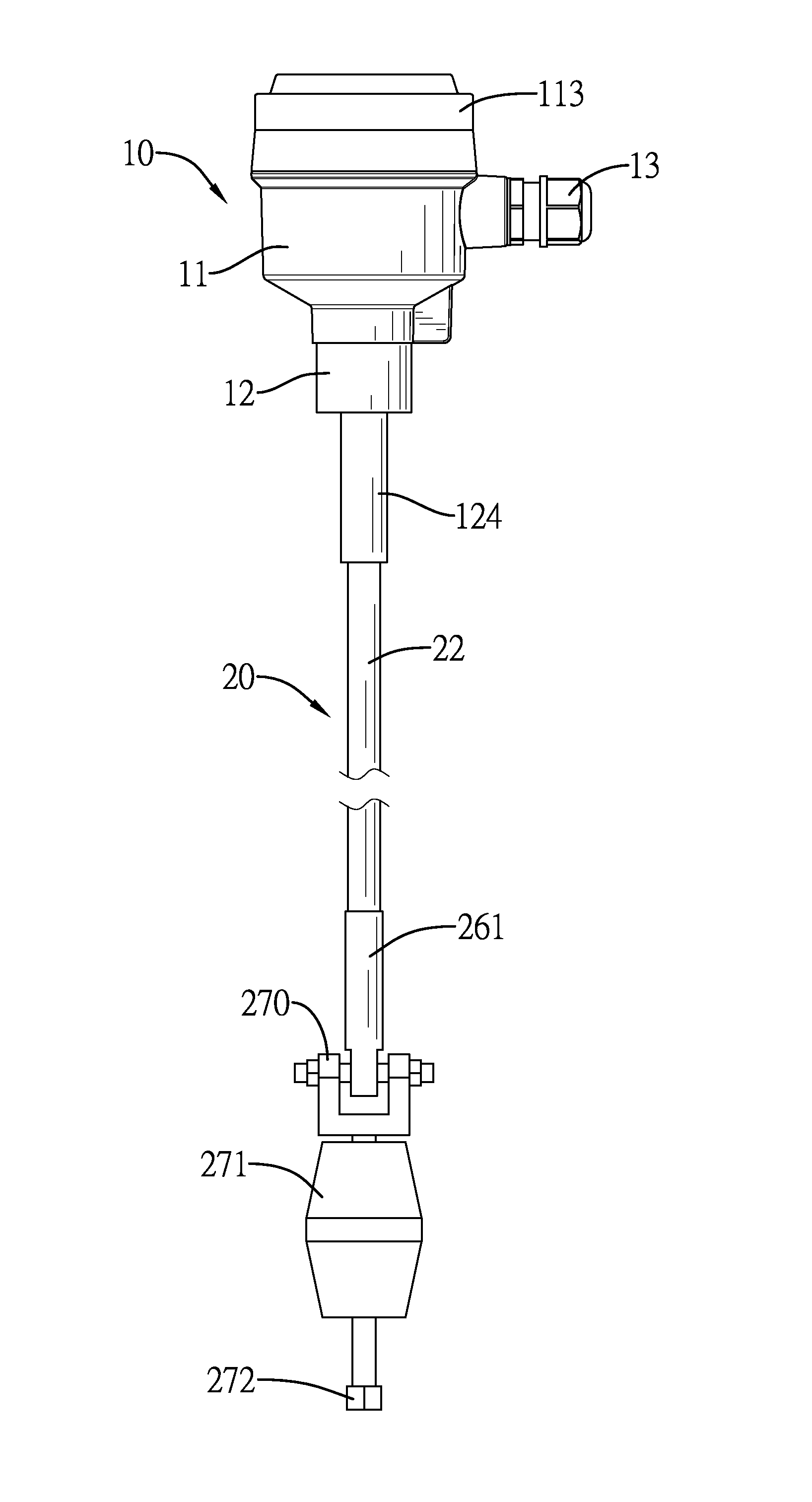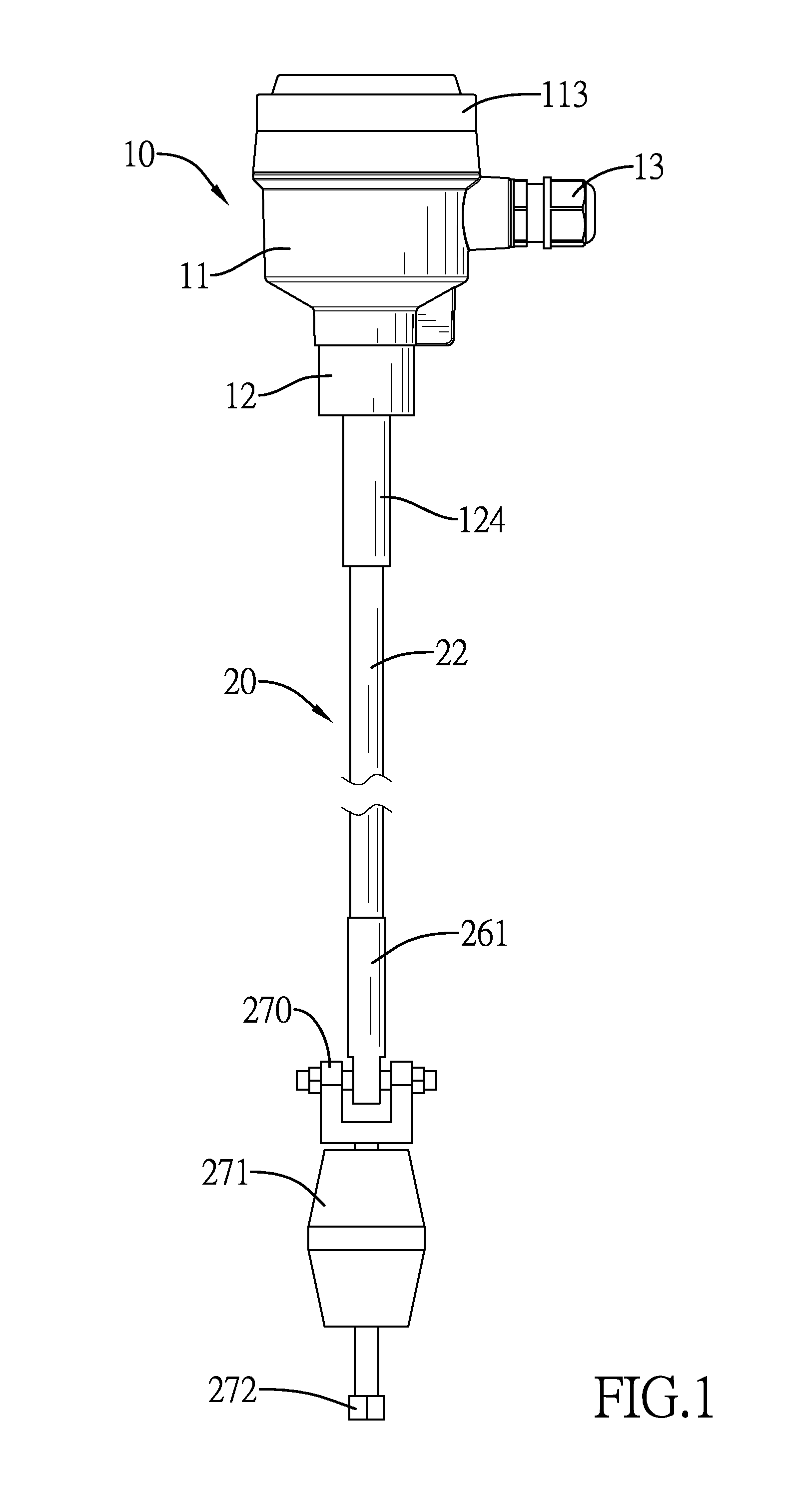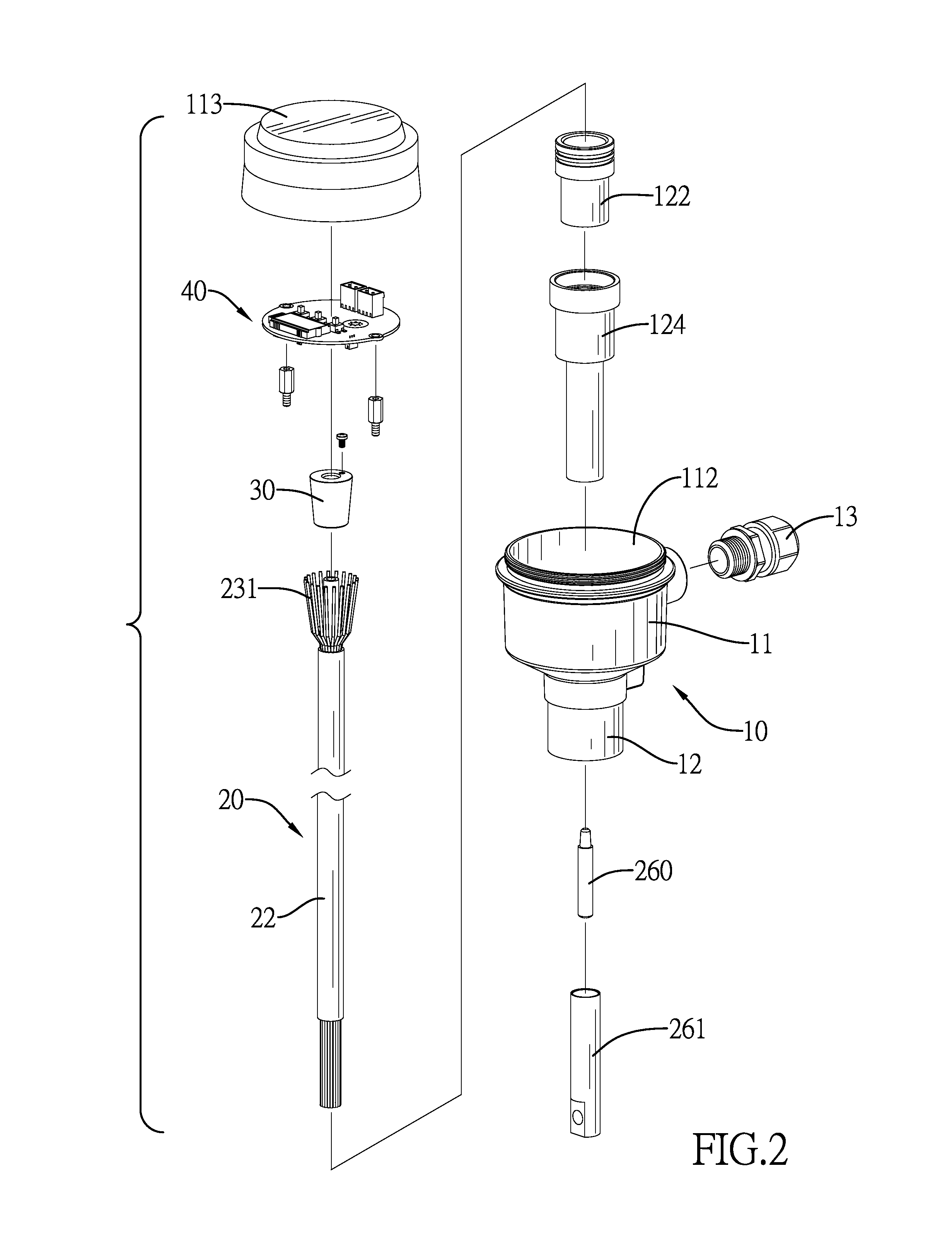Cable-Based Sensor for Detecting Material Level and Temperature
- Summary
- Abstract
- Description
- Claims
- Application Information
AI Technical Summary
Benefits of technology
Problems solved by technology
Method used
Image
Examples
first embodiment
[0036]With reference to FIGS. 1, 2 and 3, a cable-based sensor of the present invention comprises an electronic box 10, a cable 20, a stopper 30, and a signal processing module 40.
[0037]The electronic box 10 includes a top 11, a bottom 12, a space 111 formed in the top 11, a hole 121 and a base 122. The hole 121 is formed through the bottom 12 and communicates with the space 111. The base 122 is mounted in the bottom 12. A tapered hole 123 is formed through the base 122.
[0038]The cable 20 includes a sensing channel 21, an insulation layer 22 for covering the sensing channel 21, a plurality of steel wires 23 and temperature sensing units 24. A first end of the cable 20 extends to the tapered hole 123 of the base 122 and the hole 121 of the electronic box 10. The steel wires 23 are mounted around the sensing channel 21 and embedded in the insulation layer 22. Terminals of the steel wires 23 extend out of the insulation layer 22 and spread to form a cable bud 231. The cable bud 231 is ...
second embodiment
[0052]the installing base 50 is shown in FIG. 15, and the baseboard 51 is mounted on the inclined roof. An arc notch 511 is formed in the installing top of the baseboard 51. Two arc ribs 522 separately extend from two opposite sides of the rotating base 52, and two sliding rails 523 are separately formed through the two arc ribs 522. Two mounting units 524 separately extend through the sliding rails 523, and are mounted in the arc notch 511. The cable 20 extends through the rotating base 52, the arc notch 511, and the baseboard 51. The rotating base 52 can be rotated in the arc notch 511, and a rotation angle of the rotating base 52 can be limited by the sliding rails 523 for avoiding over rotating.
third embodiment
[0053]the installing base 50 is shown in FIG. 16. The installing base 50 comprises a turning base 53, a turning ball 54, and a substrate 55. The turning ball 54 is positioned between the turning base 53 and the substrate 55, and the cable 20 extends through the turning base 53, the turning ball 54 and the substrate 55. The bottom 12 of the electronic box 10 is further mounted on the turning ball 54, and the turning ball 54 can be turned to any direction for adjusting the cable 20 to be vertical with the horizon.
[0054]In short, the cable 20 is connected to the electronic box 10 by enforcing the cable bud 231 to be sandwiched between the stopper 30 and the base 122. A structure of the cable bud 231 can strengthen a connection between the cable 20 and the electronic box 10 for avoiding damages caused by impacts of solid materials. Therefore, the cable 20 can be firmly mounted on the bottom 12 of the electronic box 10.
[0055]The cable 20 includes the temperature sensing units 24 and the ...
PUM
 Login to View More
Login to View More Abstract
Description
Claims
Application Information
 Login to View More
Login to View More - R&D
- Intellectual Property
- Life Sciences
- Materials
- Tech Scout
- Unparalleled Data Quality
- Higher Quality Content
- 60% Fewer Hallucinations
Browse by: Latest US Patents, China's latest patents, Technical Efficacy Thesaurus, Application Domain, Technology Topic, Popular Technical Reports.
© 2025 PatSnap. All rights reserved.Legal|Privacy policy|Modern Slavery Act Transparency Statement|Sitemap|About US| Contact US: help@patsnap.com



